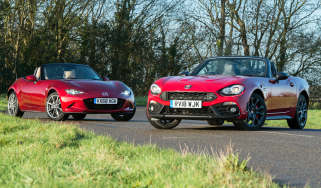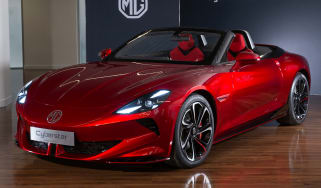'So if the supercar is the necessary glamourpuss of machinery, what’s at the opposite end?'
If supercars sit at the top of the automotive tree, what are their absolute polar opposites? Porter thinks he’s nailed it

The job of the supercar is not to streak flat-out up the Col de Turini or set a road-car record around Brands Hatch. Supercars are rarely driven like that in real life. Which is why whenever you see a supercar on the motorway it’s invariably in the middle lane doing 67 with a silver-haired chap in the driver’s seat. No, the main job of the supercar is to be the glamorous catwalk model of the car world.
Supercars have to remain rare for a reason, and that reason is to make seeing one a treat. Hence why, a few years ago, I opened the door into a dimly lit underground garage to find a Ferrari F355 on the other side and let out an involuntary ‘Oh helloooo’ to the visible disquiet of a man walking past at the time.
So if the supercar is the necessary glamourpuss of machinery, what’s at the opposite end? What gets no attention, no love and impedes not one jot on anyone’s imagination. Well, it’s airport cars.
> Click here for our review of the iconic Ferrari F355
You’ll see airport cars at any major commercial airfield. Except, perhaps you won’t because they’re the forgotten, the unnoticed, the dispossessed. They’re the forlorn hacks used by staff to get around what plane-y types call ‘airside’ and therefore visible only when you’ve got a plane ticket. Worse yet, at many airports in many countries, airport cars don’t seem to wear number plates of any kind, which means they’re forever trapped on the vast pans of international aviation. For this cruel reason, the airport car will never know what it’s like to tear down an open road, or duck and dodge through an urban rat-run. The airport car won’t trundle car parks or hammer motorways. The airport car can’t do any of those things because it hasn’t got a number plate. It’s trapped forever at the airport where it will be driven by a hundred different people in hi-vis vests, all of whom will subject it to an unsympathetic ragging in first, a graceless thump into second and then a grim trundle at 20 over to Gate 37, where they’ll perform an emergency stop before leaping out, carelessly slamming the door onto the seatbelt clasp as they go.
I feel sorry for airport cars in the same way I feel sad for those massive buses they dispatch when BA has pissed off someone in airfield management and been forced to park the 15:45 from Düsseldorf two miles from the actual terminal. Poor old airport buses, too wide to go on a normal road and condemned to a life dodging Airbuses as a result. But at least the airport bus gets to do vaguely bus-ish things. It serves the same unsexy purpose as its road-bound cousins. No such luck for the airport car. It’s a trapped, short-run hack enjoying no love, no attachment, and often suffering the rank indignity of a livery. What a horrible life for a car.
Last month I saw an amazing airport car at Wayne County in Detroit. It was a red, two-generation-old Volvo V70 with an exhaust so shagged I could see it dangling off as I gazed down from the lofty vantage of a taxiing A330. That poor old Volvo, chosen for its ability to resist the ravages of a Michigan winter yet never allowed to run free alongside its soccer-mom sisters out in the real world. It was one of the saddest sights I’ve seen in a while. But not the saddest airport car.
That came a few weeks earlier as my pay-extra-for-the-second-engine budget flight touched down at the building site where Luton Airport used to be. There, dumped on a holding pan, was a Volkswagen Golf Mk3 van. My God, that poor old Golf, trundling past 20 summers without once seeing a real road, yet soldiering on, almost certainly knackered, creaky and generally abused. I bet it’s closing in on two decades old, I thought, yet it’s probably barely got 14,000 miles on the clock. I wonder if they’re going to keep it forever? The answer to that one came as we trundled back to the poshed-up Nissen hut they try to pretend is a terminal. There, a quarter of a mile away, in some wretched compound on the perimeter of the airfield, was the Golf van’s identical twin. It was on the back of a scrapper’s truck with its back broken by a HIAB. Such a tragic end for a machine that must have given sterling service for so long in the thankless trade of moving people around an airfield. Goodbye brave Golf, goodbye.
You can drool over supercars all you like, and there’s nothing wrong with that. But every so often, we should all spare a thought for the airport car.


